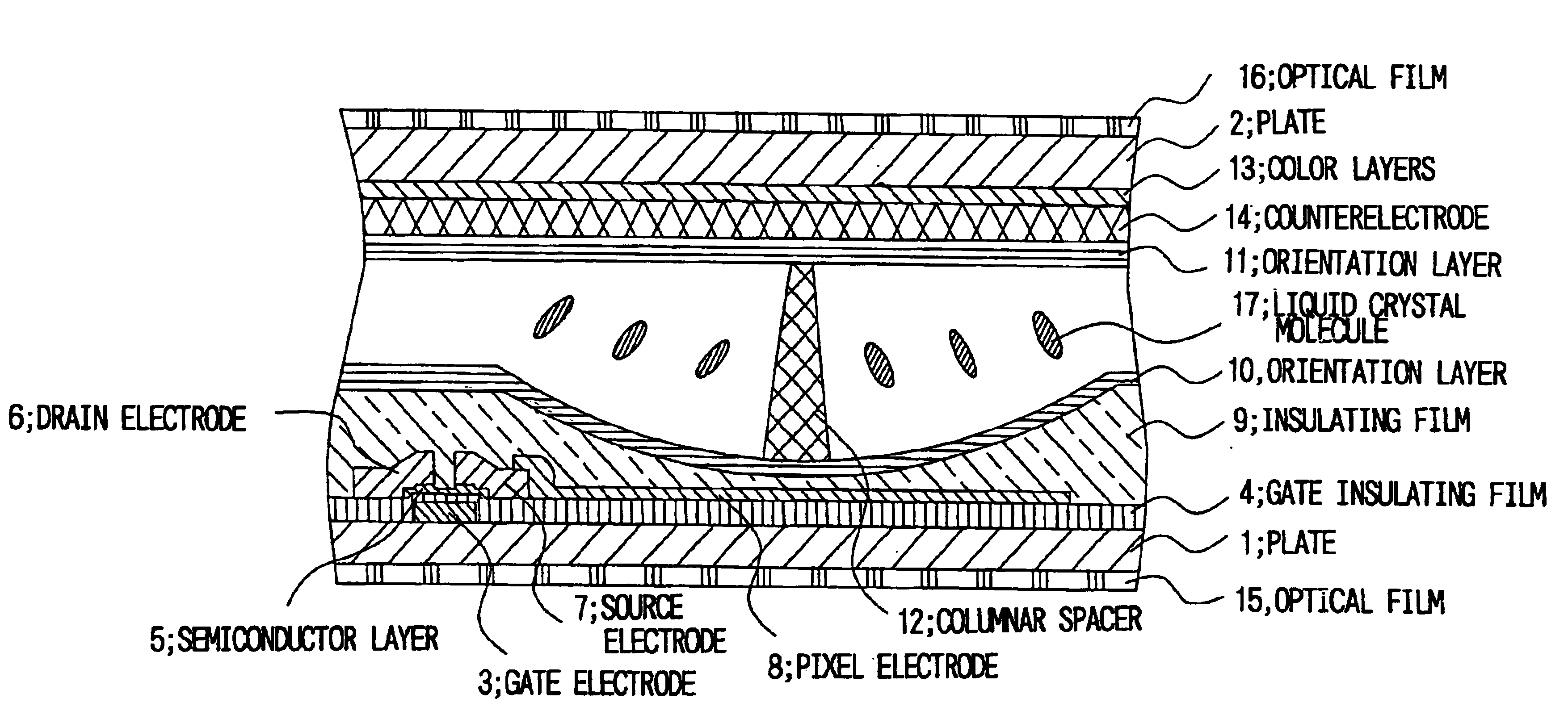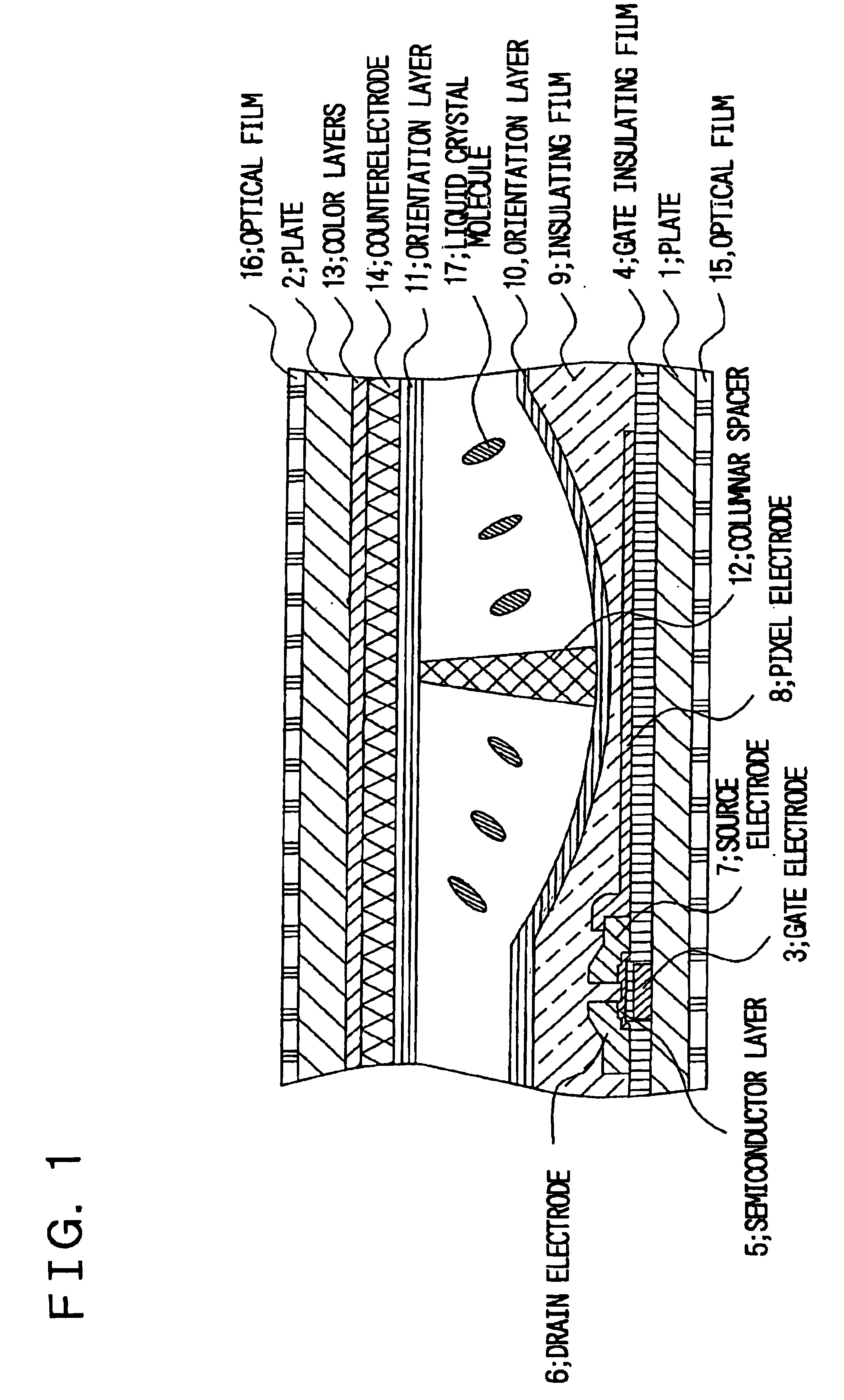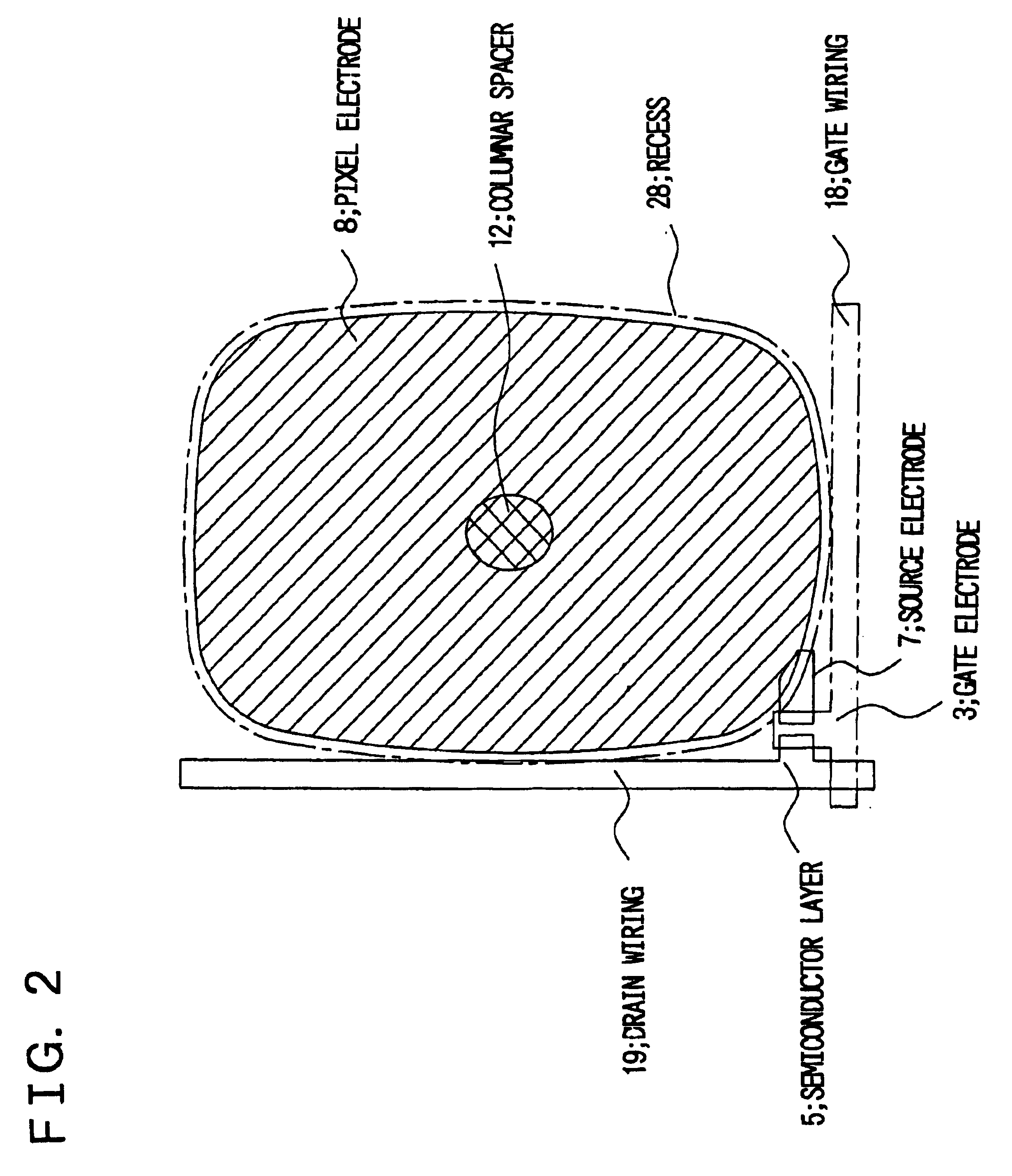Liquid crystal display device
a liquid crystal display and display device technology, applied in the direction of lifting devices, instruments, optics, etc., can solve the problems of degrading the display characteristic, poor liquid crystal alignment, and inappropriate distribution of spacers (spheres etc.) used to maintain the panel gap between the plates
- Summary
- Abstract
- Description
- Claims
- Application Information
AI Technical Summary
Benefits of technology
Problems solved by technology
Method used
Image
Examples
first embodiment
A liquid crystal display device according to a first embodiment of the present invention will be described with reference to FIGS. 1 to 3, in which FIG. 1 is a sectional view showing one pixel of a liquid crystal display device according to the first embodiment, FIG. 2 a plan view of the one pixel and FIG. 3 a sectional view showing one pixel of a liquid crystal display device in which the shape of the curved surface of an orientation layer differs from that of FIG. 1.
A method of manufacturing the liquid crystal device of the first embodiment will be described with reference to FIGS. 1 and 2. First, a gate electrode 3 and gate wiring 18, which comprise a single layer or multiple layers of a metal such as Cr or ITO, are formed on the transparent plate 1 such as glass by a process such as sputtering and a photoresist step, and a gate insulating film 4 comprising the two layers of silicon oxide and silicon nitride is formed on the gate electrode and gate wiring by a process such as CVD...
second embodiment
The second embodiment differs from the first embodiment in that the pixel electrode 8 is provided on the insulating film 9 and basically defines the shape of a recess; wiring 20 is an electrically conductive film, preferably a transparent film so as not to block transmitted light, formed by a process such as sputtering and a photoresist step (here, using ITO) so as to electrically communicate the source electrode 7 and pixel electrode 8; a film which orients the liquid crystal molecules perpendicular to the horizontal plane of the plates is adopted as an orientation layer 21 (and is formed, here, by oblique vapor deposition of SiO); and the direction of inclination of the side surface (wall) of the columnar spacer 12 is such that the cross section of the columnar spacer 12 narrows in the direction toward the plate 1.
According to this arrangement, the pixel electrode 8 generally makes up or defines a recess. As a result, the electric field produced at application of voltage is not pe...
PUM
 Login to View More
Login to View More Abstract
Description
Claims
Application Information
 Login to View More
Login to View More - R&D
- Intellectual Property
- Life Sciences
- Materials
- Tech Scout
- Unparalleled Data Quality
- Higher Quality Content
- 60% Fewer Hallucinations
Browse by: Latest US Patents, China's latest patents, Technical Efficacy Thesaurus, Application Domain, Technology Topic, Popular Technical Reports.
© 2025 PatSnap. All rights reserved.Legal|Privacy policy|Modern Slavery Act Transparency Statement|Sitemap|About US| Contact US: help@patsnap.com



